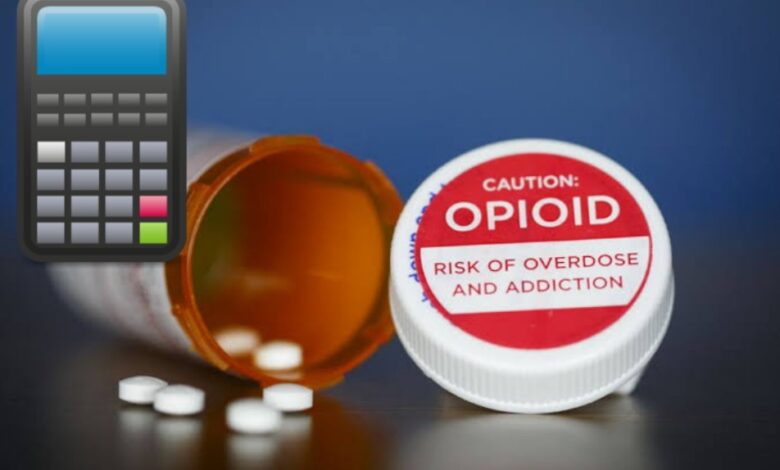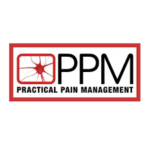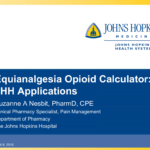Best Online Opioid Conversion Calculators

What Are Opioids?
Opioids are a class of drugs naturally found in the opium poppy plant and that work in the brain to produce a variety of effects, including the relief of pain with many of these drugs. Opioids can be prescription medications often referred to as painkillers, or they can be so-called street drugs, such as heroin. Many prescription opioids are used to block pain signals between the brain and the body and are typically prescribed to treat moderate to severe pain. In addition to controlling pain, opioids can make some people feel relaxed, happy or “high,” and can be addictive.
Opioids are an important tool in the management of acute and chronic (cancer and non-cancer) pain. Pain and palliative care practitioners are frequently called upon to switch a patient from one opioid regimen to a different regimen either to gain better pain control, to minimize opioid-related adverse effects, to overcome opioid tolerance, or due to a change in patient status.
What is an opioid conversion calculator?
An opioid conversion calculator is a calculator intended for calculating the equivalent dose for a patient taking one or more opioid medications. These calculators are not meant to be used in determining doses when converting a patient from one opioid to another. Equianalgesic dose ratios are only approximations and do not account for genetic factors, incomplete cross-tolerance, and pharmacokinetics.
Best Opioid Conversion Calculators
OPG Opioid Conversion Calculator: This calculator was created by the Oregon Pain Guidance Group with support from the Centers for Disease Control and Prevention through the Cooperative Agreement, Number 6 NU17 CE 002751-02-01.
PPM Opioid Calculator: This calculator is managed by Practical Pain Management. There are approximately 1 million unique visitors to the esteemed conversion calculator annually. PPM, a property of Remedy Health Media, was founded in the year 2000 to provide in-depth clinical information on a variety of pain conditions and treatment approaches.
EviQ Opioids calculator: This calculator is managed by eviQ, an Australian Government, freely available online resource of cancer treatment protocols developed by multidisciplinary teams of cancer specialists. With a goal to improve patient outcomes and reduce treatment variation, eviQ provides evidence-based information to support health professionals in the delivery of cancer treatments available at the time treatment decisions are being made.
Opioids NOT available in the eviQ calculator include:
- Combination products: There is no conclusive evidence that combination analgesics containing lower doses of codeine with paracetamol, aspirin or ibuprofen have any benefits over these non-opioids alone.
- Buprenorphine transdermal patches: Calculator will only allow conversion FROM a buprenorphine patch and not TO a patch as there is limited evidence about, and experience of it’s use compared to other opioids.
- Methadone: Dose conversion to: from other opioids and methadone is complex; consultation with pain management specialists familiar with methadone use is recommended.
- Fentanyl Lozenges: There is no dose equivalence between fentanyl lozenges and other opioid formulations. The optimal dose cannot be predicted by the dose of regular opioid or pervious breakthrough opioid. It should be individually titrated by starting at the lowest dose (200 micrograms).
ClinCalc Equivalent Opioid Calculator: This calculator was developed by Sean P. Kane, PharmD, BCPS a critical care pharmacist, associate professor, and passionate advocate of evidence-based medicine. ClinCalc is dedicated to creating high-quality, evidence-based resources and educational content for healthcare providers.
CDC Opioid Guideline Mobile App
CDC’s Opioid Guideline App can help providers apply the recommendations of CDC’s Guideline for Prescribing Opioids for Chronic Pain in clinical practice by putting the entire guideline, tools, and resources in the palm of their hand. Managing chronic pain is complex, but accessing prescribing guidance has never been easier.
The application includes a Morphine Milligram Equivalent (MME) calculator, summaries of key recommendations, a link to the full Guideline, and an interactive motivational interviewing feature to help providers practice effective communications skills and prescribe with confidence.
Free Download
The CDC Opioid Guideline App is available for free on Google Play (Android devices) and in the Apple Store (iOS devices).
Opioid Prescribing Guideline Mobile App pdf icon [PDF – 637K]
Equivalency Table
| Drug | Oral/Rectal Route | Parenteral Route | Conversion Ratio to Oral Morphine | Equianalgesic Dose of Oral Morphine |
| Morphine sulfate | 30mg Oral morphine | 10mg of parenteral morphine | Parenteral morphine is 3 times as potent as oral morphine | 30mg Oral morphine |
| Oxycodone | 20mg of oral oxycodone | NA | Oral Oxycodone is roughly 1.5 times more potent than oral morphine | 30mg Oral morphine |
| Hydrocodone | 20mg of oral hydrocodone | NA | Oral hydrocodone is roughly 1.5 times more potent than oral morphine | 30mg Oral morphine |
| Hydromorphone | 7mg of oral hydromorphone | 1.5mg of parenteral hydromorphone | Oral hydromorphone is about 4-7 times as potent as oral morphine Parenteral hydromorphone is 20 times as potent as oral morphine | 30mg Oral morphine |
| Fentanyl | NA | 15 micrograms/hr | Transdermal fentanyl isapproximately 80 times as potent as morphine (This is based on studies converting from Morphine to fentanyl. Currently, there are no empirical studies converting fentanyl to morphine). | 30mg Oral morphine |
| Meperidine Meperidine is nota recommended drug in a palliative care setting and is to be avoided. If a patient with chronic pain is on meperidine, convert patient to an equianalgesic dose of one of the other opioids listed in this table. | 300mg of oral meperidine | 75mg of parenteral meperidine | Oral Morphine is about 10 timesmore potent than oral meperidine and about twice more potent as parenteral meperidine (mg for mg) | 30mg Oral morphine |





